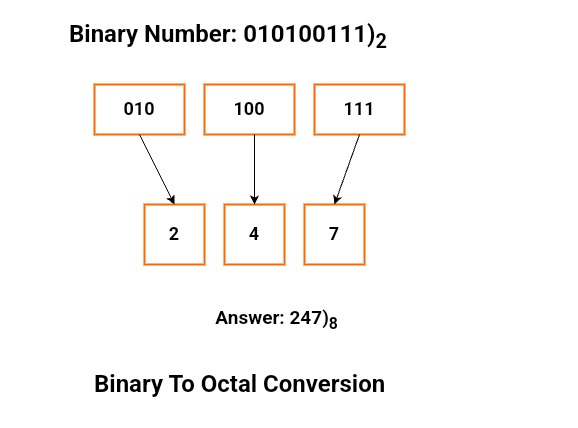How to use:
Octal to binary:
- Enter any octal number you want to convert.
- Click the “Convert” button, and instantly, you’ll receive the binary representation.
Binary to Octal:
- Enter the binary number you wish to convert.
- Hit “Convert,” and just as quickly, you’ll get the octal equivalent.
Octal to Binary and Binary to Octal Converter
What are octal and binary number systems?
Binary System (Base 2):
The binary system, also termed base-2, relies on two digits, 0 and 1, to denote numerical values. Each digit within a binary number signifies a power of 2. The rightmost digit representing 2^0 (1), the next representing 2^1 (2), followed by 2^2 (4), and so forth. Binary numbers find extensive application in digital circuits, where electronic switches are either on (represented by 1) or off (represented by 0).
Octal Number System (Base 8):
It employs eight digits, 0 through 7, to express numerical values. In an octal number, each digit represents a power of 8. The least significant digit denoting 8^0 (1), the subsequent digit representing 8^1 (8), and the following 8^2 (64), and so on. Octal numbers are frequently used in computer programming and telecommunications, facilitating the compact representation of groups of three binary digits (bits) by a single octal digit
Convert From Octal to Binary Number System:
As you know, computers speak binary fluently. Sometimes engineers use a kind of shorthand called octal (base-8) to represent the same information. This happens when we’re dealing with computer systems that mainly use binary but might need octal for specific tasks. To do this conversion, we take each digit of the octal number and turn it into binary. This helps us understand how data is stored and handled in binary but still lets us interpret it in octal when we need to. Think of it like a cheat sheet! Octal uses digits from 0 to 7, and each digit corresponds to a specific group of 3 bits in binary. Have a look at the conversion table for better understanding.
Conversion Process:
Converting an octal number to binary involves breaking down each octal digit into its binary equivalent.
- Write down the octal number.
- Replace each octal digit with its binary equivalent.
- Combine the binary equivalents to form the binary number.
- For example, convert 247)2 into binary equivalent.
- Replace each octal digit with its binary equivalent.
- starting from the rightmost octal digit.
- 7)8 = 111)2
- 4)8 = 100)2
- 2)8 = 010)2
- Combining all the values we get the equivalent binary value of the given number 010100111)2.

Binary To Octal Conversion:
Conversion Process :
To convert a binary number into octal, follow these steps :
- Begin with the rightmost (least significant bit) digit of the binary number.
- Group binary digits into sets of 3, starting from the right, then convert each set to its octal equivalent.
- For example, to convert the binary number 010100111)2 into octal, follow these steps:
- Group binary digits into sets of 3, starting from the right, then convert each set to its octal equivalent.
- 111)2 = 7)8
- 100)2 = 4)8
- 010)2 = 2)8
- Combining all these values we get the equivalent octal value 247)8 .

Closing Thoughts:
By mastering binary to octal and octal to binary conversion, you gain a deeper understanding of how data is stored and manipulated within computers. This tool offers a simple and efficient way to perform conversions, saving time and effort This tool is specifically suitable when working with large datasets or complex binary numbers. Whether you’re a beginner learning about number systems or an experienced programmer needing quick conversions, these online tools provide a seamless solution.
